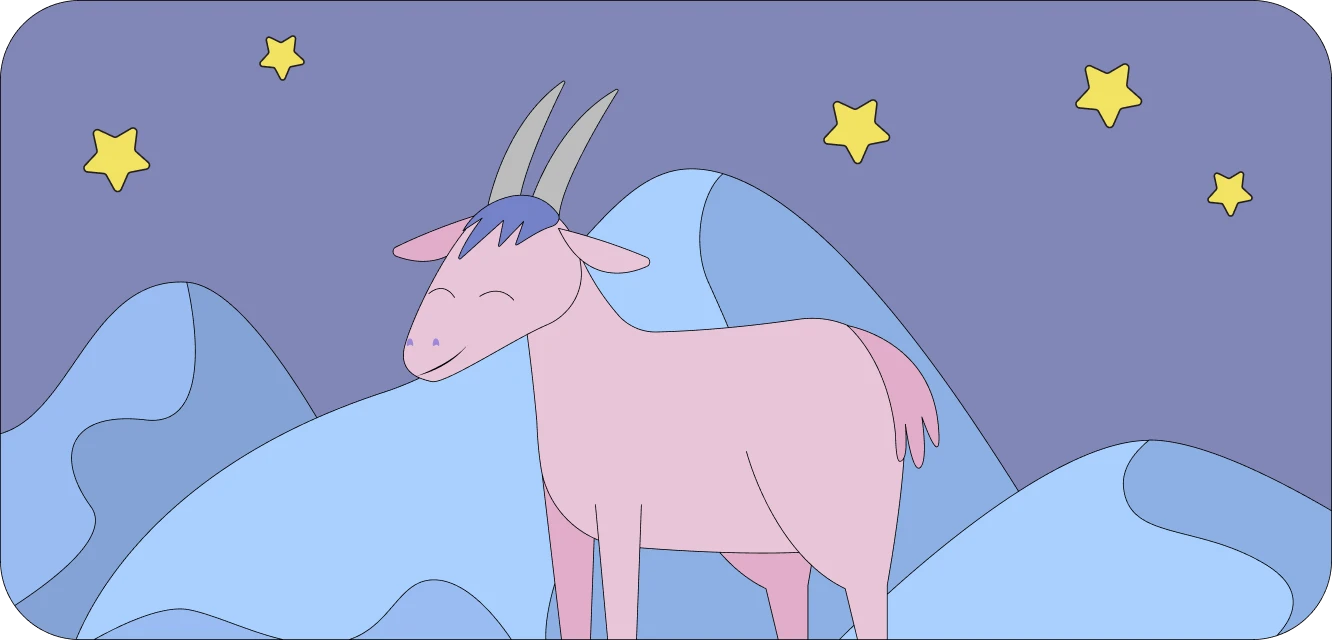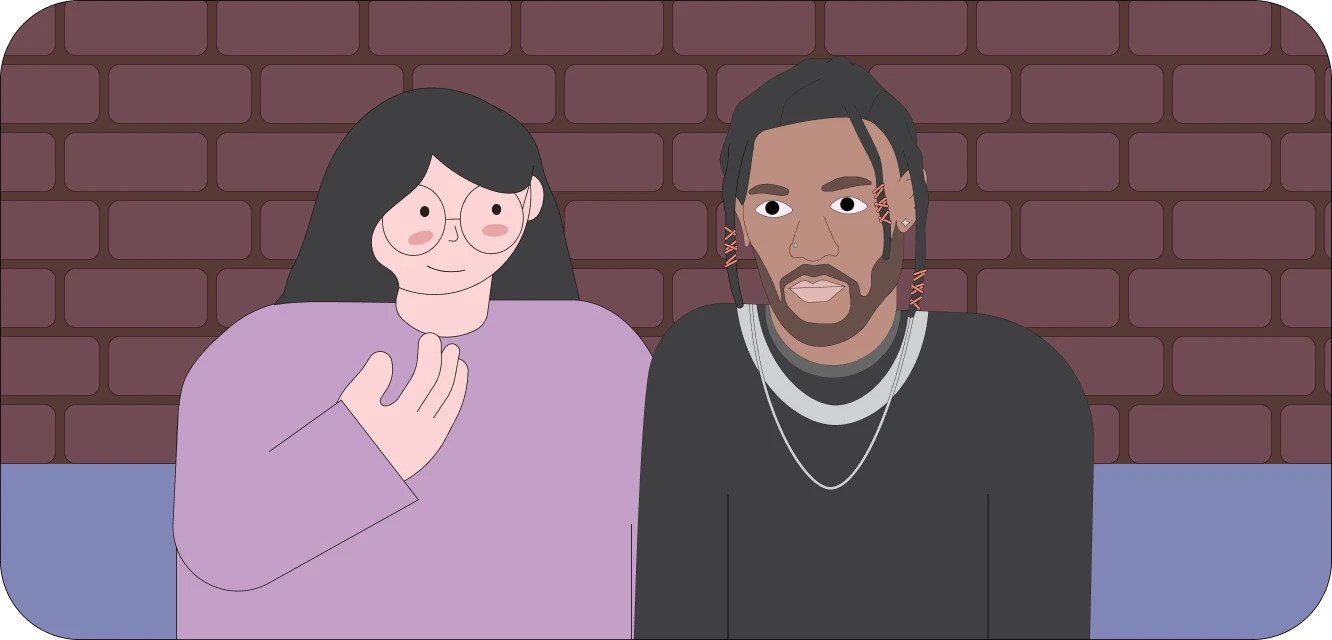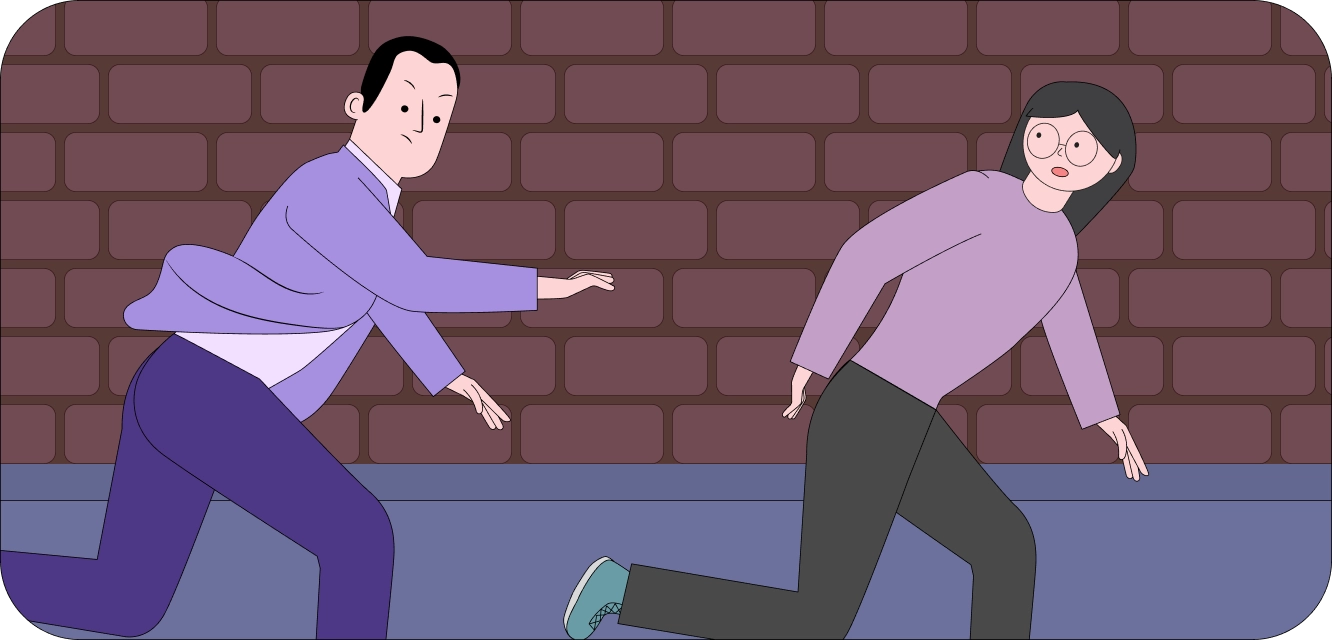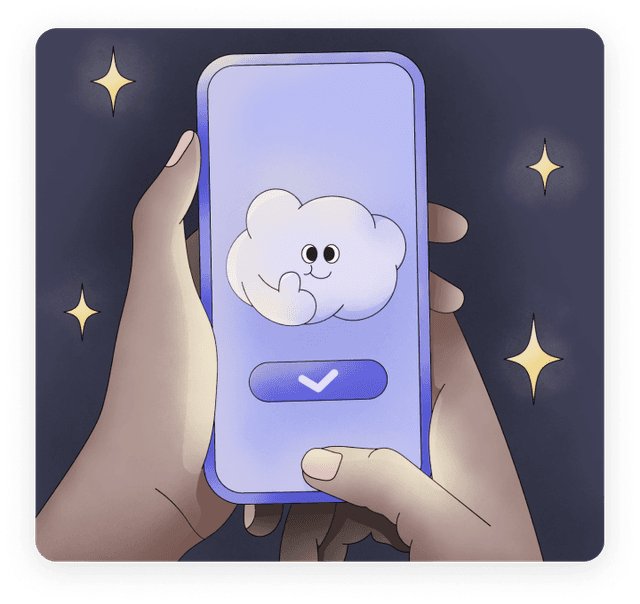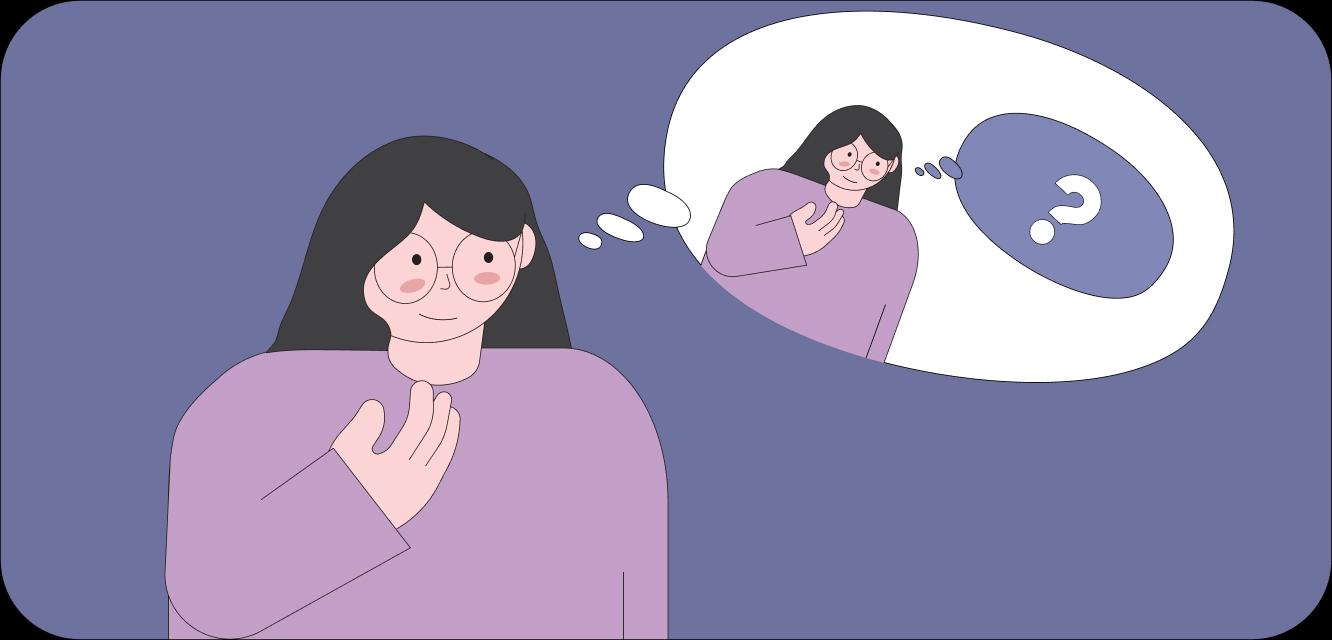
Denys Chumak
14 Jul 2022
What Does It Mean When We Dream?
Introduction
For the longest time, dreams have been a fascinating topic for man. So many theories, some historical while others scientific, have been associated with the phenomenon of dreaming. On average, a person sees up to 5-6 dreams per night. However, the number of these remembered is altogether a different scenario. So what are dreams? Why exactly do you remember some of them clearly, while there are few of those dreams you can hardly recall? The reason lies in the sleep stage. Each person, when they sleep, goes through various stages of the sleep cycle. It was earlier believed that most dreams occur during the Rapid-Eye Movement(REM) stage. However, it is scientifically proven that these can occur during all sleep stages. The difference between the REM and NREM sleep stages is how vividly you remember the dream. The strongest dreams occur during the REM cycle. This is because certain brain parts become active during this stage, enabling sensory images and emotions. Scientists are trying to understand what dreams mean and why people go through them; however, plenty of questions still remain a mystery. Let's take a closer look at what does dreams mean, the different phases of sleep you go through, and much more in-depth.
Phases of sleep
Sleep takes place in cycles, and each of these cycles comprises four different stages. These are known as phases of sleep. One essential thing to note in these sleep cycles is that not all states have equal duration. Instead, each initial stage shortens, and the last step (REM) lengthens. The sleep stages change smoothly over the night, giving you a good rest. Another important aspect of sleep cycles is that it occur multiple times during the night. Each sleep cycle, as mentioned, consists of 4 stages. The N1, N2, N3, and REM stage.
N1 Stage- Light sleep stage
Time: 1-5 Minutes
It is the lightest sleep stage, contributes about 5% of the total sleep cycle, and lasts only 1-5 minutes. During this stage, the EEG brain frequency is slightly slower than the wake time, signifying a transition period between wakefulness and sleep has started. During this stage, the brain activity starts to slow down, and the body relaxes and prepares itself for the following sleep stage. Often when a person is seen dozing off, this is the stage they are in, and if not disturbed, they can quickly escalate to the N2 stage. However, if disturbed, one can soon wake up.
N2 Stage- Deeper Sleep Stage
Time: 10-25 minutes
This is a deeper sleep stage than the N1 stage and contributes 45% of the total sleep cycle. During this stage, the body and mind enter a more subdued phase meaning the muscles are more relaxed, and the EEG activity of the brain shows sleep spindles and K complexes. This brain activity allows for memory consolidation, where the brain gathers information taken throughout the day and arranges them. You will notice a drop in body temperature and heart rate during this sleep stage and become less aware of your surroundings. One of the most common physical occurrences during this stage is teeth grinding.
N3 Stage- Deepest Sleep Stage(NREM stage)
Time: 20-40 minutes
Often called slow-wave sleep(SWS), it is the deepest sleep stage of all of the rest. Now people, let's not confuse this with the REM sleep stage. REM may be the stage when most of the dreaming can occur, but that is the most restless sleep stage. NREM is when people are so deeply asleep that even the loud noises around them cannot wake them up. If an individual is forcibly woken up from this sleep stage, they will have considerable slow mental awareness for the next 30 to 60 minutes. This is also a regenerative stage where the body regrows the tissues, starts the healing process, and strengthens the immune system. The EEG recording of the brain shows delta waves, the slowest form of brain waves. This stage allows you to wake up fresh the next day and generally lasts 20-40 minutes.
REM Stage- The dream stage
Time: 10-60 minutes
This is the stage where most of the dreaming occurs. This is the Rapid Eye Movement stage(REM), and the EEG recording shows the beta waves, similar to the waves during wakefulness. The mental activities are at their peak, while the voluntary muscles become immobilized during this stage, so you don't act out during your dreams. Have you ever felt sleep paralysis? Then there are high chances that you woke up during REM sleep stages. This stage contributes to 25% of the total sleep cycle. Another characteristic of this stage is that emotions and emotional memory are consolidated during this stage.
Please note that dreaming can occur in any sleep stage; however, the intensity will be less than in the REM stage. Additionally, these dream periods can shorten or increase depending on the number of sleep cycles you have during the night.
What are dreams?
Dreams are a collection of thoughts, processes, and images that occur when you sleep. Humans need sleep to regulate their metabolism and the functioning of the brain. It relaxes the mind and body and allows your consciousness to connect with your subconscious mind. On average, a person goes through 5-6 dreams in a night; each of these lasts from 5-20 mins. Sometimes you see things that are evolving with a storyline, while other times, you see yourself in a plot doing something that makes absolutely no sense at all. You may hear stories of how some people had their most creative ideas in their sleep, and some found the solutions to the most complex problems. So why exactly does this happens? Let's peek into the brains and have the dreams explained more straightforwardly. When you go off to sleep, the parts of the brain start to organize the information gathered during the day. Then, during the deep sleep stage(REM), you will go through these pieces of information where your brain tries to connect the dots. Dreams also allow you to heal from any traumatic event you went through throughout the day and find peace while you sleep so you can wake up with a solution in the morning. During sleeping, the brain does not release stress or anxiety-triggering molecules, allowing you to revisit the past or the upsetting memory in a much calmer setting. This is why you can easily find a solution to a problem or get over the trauma while you sleep.
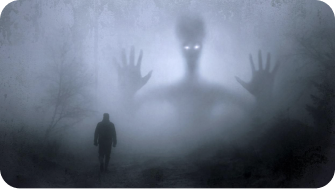
Nightmare
Nightmares are disturbing dreams that are generally inspired by negative emotions like anxiety or fear. Nightmares bring forth a series of disturbing feelings within you, like guilt, sadness, fear, or depression. There can be various reasons why someone goes through nightmares; some of these are-
- Scary movies - If you enjoy scary movies, you can experience nightmares inspired by the content you love watching, especially if watching right before bed.
- Trauma - Any disturbing incident from the past that had impacted you significantly. You may think you are over it, but it still resides within your unconscious mind.
- Stress - Everyday life and its problems may sometimes become the reason for anxiety, triggering nightmares. Often you will notice these nightmares depict things you are uncomfortable about in your day-to-day life.
- Medications - Some drugs used to treat certain diseases, like blood pressure, depression, or Parkinson's disease, may cause nightmares.
Each of us goes through nightmares once in a while, and it may only become a cause of concern if these are recurring. Therefore, diagnosing the reason or cause behind the frequent nightmares is the first step to getting rid of them. The subconscious mind portrays the deep-seated issues within the mind in the form of dreams, while the negative emotions are reflected as nightmares, and positive ones appear as pleasant dreams. Getting a dream interpretation can also help determine the cause of the nightmares.
Lucid dreams
Have you been in sleep and suddenly realized that you are dreaming. It is a phenomenon where you are fully aware of the occurrences, i.e., fully conscious of your dream. You know that the things going on inside your head are not true, and you are dreaming. This is known as lucid dreaming. Since you are aware of the happenings, some people can even control the contents of their dream. Often these appear to be very vivid and clear; even though they are unfamiliar, the intensity of emotions you feel during lucid dreaming is pretty high. One way to know if you are going through such a phenomenon is to recall the dream you just had, and if it seems bizarre yet so realistic, congratulation! You just experienced lucid dreaming, which may sometimes be filled with intense emotions. Lucid dreaming generally takes place during the REM sleep stage. Which usually starts after 90 minutes of sleeping and is marked by rapid eye movement. What does dreams mean, and why these occur is still a mystery for the researchers. However, there are some theories around them. People who are deep thinkers and always reflect upon themself in their heads have higher chances of going through lucid dreaming. How long a lucid dream lasts depends upon the person going through the phenomenon. Some immediately wake up after realizing they are dreaming; However, some remain in the same state and try to influence it.
Lucid dream also has their own benefits like:
-
Increasing creativity - It is seen that people who consciously go into lucid dreaming wake up with much more creative ideas or insights to solve the problems they are facing in their life.
-
Relieving anxiety - Being able to control the dream contents, people gain confidence that they will be able to handle the situations in their life that make them anxious. This benefits those who have nightmares, and lucid dreaming can help them overcome challenging problems.
-
Improve motor skills - This greatly benefits those who have some physical disability, and mentally practicing motor skills improves the physical ability to improve them.
Interpretation
Have you ever woken up with an unselling feeling? A weird dream you cannot make out why you had it? Every dream that you have has a particular meaning associated with them. These can sometimes reflect your day-to-day life, which your subconscious mind is projecting when you sleep. However, some weird dreams you have some nights do not make much sense. For example, being chased by lions, flying on a dragon, or running through the corridors. You may sometimes find yourself in a setting you have never seen in your waking life. Some of these dreams could be so rich and compelling, making you feel like there is a hidden meaning behind them, which is entirely possible. Most of the dreams you see are directly related to your day-to-day life, hiding in symbols like airplanes, snakes, dragons, flying, teeth, etc. To understand the dreams meaning, it's best to go for a dream interpretation; however, when you decide to get an interpretation along with the symbols you see, analyze your emotions while having that dream. How were you feeling? Were you exhilarated or sad, scared or nervous, or simply happy and calm? Your emotions play a crucial role when deciphering your dreams.
Characters
A dream is like a movie with various characters. Each dream consists of 3 different types of characters.
- The main character is also known as the archetype. This further includes five types self, shadow, anima, animus, and persona.
- The supporting character- represents your emotions, thoughts, and mental condition.
- The extra characters represent the parts of your subconscious mind.
These characters may appear to be the people you know, and sometimes they will be someone you don't know about. These are often terms as dream archetypes. Although these characters you see are part of your psyche, they are still actors following a predetermined role. These characters represent your inner world, which may appear like the people you have seen (family, friends, co-workers, neighbours, and many more). However, your psyche is trying to use them metamorphically and presenting hidden desires or goals. Now let's understand the various characters you see in your dream. Self: Seeing yourself in your dream signifies that your consciousness and subconsciousness are unified. It further means that the conscious parts of you, the parts you are familiar with, and the subconscious parts of your personality, the parts you have tucked away or forgotten, resurface while you dream.
Shadow: This is the dark side of your psyche. Humans like to believe that they are good and would never harm anyone, often forgetting that light and dark are the parts of the same coin. The shadow part is often suppressed in a conscious state and can be represented in the form of a killer, a monster, or any other negative character in your dream. However, it is essential to remember that this fear, regret, anger, and frustration are absolutely normal and must be embraced to form a solution for these.
The anima: These represent feminine qualities within the man. These often surface when a man dreams about female characters like their mothers, sister, or a female friend. Everyone has a female and male character and dreaming about one only suggests that you must bring out these qualities within you instead of suppressing them, as they will benefit you in the long run. Animus: This is simply the opposite of the anima. This represents the masculine qualities of the dreamer, which they need to bring out more rather than suppress.
Persona: This is the representation of the dreamer in front of the public. A mask you put in front of the world suppresses your true nature. However, it is the false impression you put forward that you control all of the urges and reactions when in public.

Brain activity and dream types
Do you remember what you dreamt last night? Dreams have always been a mystery that man is trying to solve to date. On average, people go through 5 or 6 dreams in a night; however, it's unlikely to remember all of them. Some have recurring dreams, while others dream about all the absurd things. Some vividly retain their visions, while others can't recall the topic. This stark contrast between the dream patterns from individual to individual has extensively made scientists curious to know what exactly happens in the human brain when sleeping. One way to record brain activity during various sleep stages is using the EEG method. For this experiment to occur, a person needs to go through different sleep cycles for atleast 5-6 hrs. The most vivid dreams usually occur during the REM stage, in contrast to the NREM stage, which is remembered in bits and pieces. This is because the brain has the highest activity recorded during the REM stage. To understand the phenomenon of a dream, it's pertinent to understand the parts of the brain involved in dreaming. Brain activity both increases and decreases during the sleep stage. During the first three sleep stages(N1, N2, n3), the brain waves slow down, and muscles are relaxed. Once the person is in a deep sleep, they enter the REM stage, where brain activity increases rapidly. It's almost similar to brain activity during wakefulness. When you dream, the entire brain becomes active, including the amygdala, hippocampus, right temporal lobe, and pons. Here is how the whole dreaming process starts in the brain-
- The pons initiates two sets of signals; one travels towards the thalamus and cortex, and the second travel to the spinal cord.
- The main purpose of the signal traveling to the spinal cord is to relax the muscles responsible for body movement. This is essential, so you don't act out during your dreams. Most of the time, you may experience sleep paralysis when you wake up during an active REM stage; this could be why.
- Thalamus is the part of the brain responsible for long to short-term memories, which it has gathered from all the senses.
- This part of the brain remains inactive during all three sleep stages(N1, N2, N3) but has recorded activity during the REM stage.
- The information gathered is then sent to the Cerebral Cortex.
- The cerebral cortex is responsible for activities like thinking, learning, and organizing information sent by the thalamus. This part of the brain constructs all the prominent visuals you see in your dreams.
- Amygdala- Another part of the brain that remains active during dreaming. This is responsible for your emotional memory, which is why you end up having emotions like happiness, fear, peace, etc., associated with your dream.
- The frontal lobes record the least amount of activity during the REM sleep stage. These are responsible for logical thinking. If you ever wondered why most of the time, your dreams meaning are absurd and bizarre but are still accepted by you during dreaming as they are natural, it is because your reasoning is inactive.
Conclusion
A person goes through countless dreams throughout their lifespan. This is because when you sleep, certain parts of the brain become active while others show the least amount of activity. These functional parts sort out every day's events. This is why you will see dreams revolving around your day-to-day life and some repressed emotions. Dreams are essential, as they allow the dreamer to go through all their feelings, especially the traumatic ones, much calmer, allowing them room to understand the situation and cope with them in real life. One of the most important things is that not all your dreams reflect your day-to-day life. A dream's meaning changes depending upon the emotions you feel and the characters you see in your dream. Some of the most outlandish or scray dreams may signify good luck. If you are experiencing recurring dreams, or lucid dreams, or want to know what your dreams mean, our therapists at DreamApp will help you decipher those dreams so you can understand what your psyche is trying to convey to you.
Related Articles
Did you have an unusual dream with this symbol?
Let's analyze this dream with our expert!
At least five words, please.

Your dreams are completely private
Take control of your dream emotions in the free mobile app



The most recent users' dreams
Go to the user dreams page
Dream App
Free dream interpretations

(1,213)
